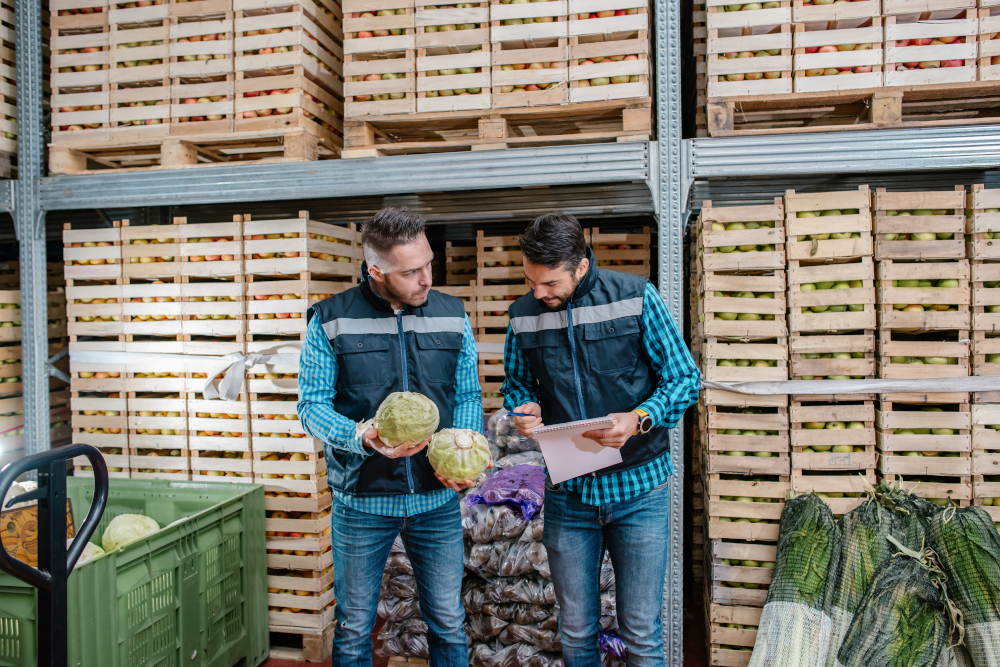All Warehouse Management Systems keep track of stock, they vary in sophistication and emphasis but fundamentally the building blocks of all WMS systems are very similar. However, there is one important area that divides WMS systems into two groups; WMS solutions that support lot tracking and those that don’t.
‘Product lots‘ are used to differentiate seemingly identical products, they can be used to identify manufacturer batches, to link items to the relevant warehouse delivery and to track ‘best before’ and ‘use by’ dates. Product lot tracking is essential when handling perishable goods that have a short shelf life but are also used in environments that need to support product recalls or provide end-to-end traceability of raw materials through a manufacturing process and out to customers.
Many fulfilment businesses have a few products for which they need to capture the lot information at the point a customer order is despatched. The packing process needs to ensure that the packer is prompted to capture the lot reference whenever they pack an order containing lot-tracked SKUs, ideally by scanning a product barcode that contains the lot reference. This is relatively easy and doesn’t impact other warehouse operations but more detailed lot tracking requirements can permeate every aspect of the warehouse, adding another layer of complexity to the whole operation.
Warehouse operations that need to track product lots from receipt have to be able to either prepopulate the lot details before a delivery arrives or capture them when the delivery is processed. Some SKUs might only require a unique batch reference to be captured, others might include a country of origin, information on the import duty paid and other industry-specific details. If the product is perishable the lot information will include one or more dates (best before, use by, sell by). The WMS should ensure that all the necessary product lot information is captured, either in advance or when the delivery is received. For some deliveries, this might need to be a manual process that requires a user to enter all the necessary detail, or it might be encoded in a GS1 or other scannable label format. If the product lot information can be made available electronically the WMS should be able to receive the lot details through a file import or external API.
Slow and Compact or Fast and Fragmented
If the lot-tracked items are individually labelled with the lot information then mixing lots in the same location needn’t destroy the integrity of the tracking process. However, it does mean that users will be required to confirm the lot details when they move or pick lot-tracked items. Although this is space efficient it’s prone to errors and is slow, it’s far more common to configure the WMS to ensure that different product lots for the same SKU can never be held together in the same location. It should be possible to rely on the WMS to enforce rules that ensure lots are never mixed and to infer the lot details from the source location whenever lot-tracked items are moved or picked.
Although the WMS should stop two lots of the same SKU being held together there is of course no reason why different SKUs can’t share the same location. OrderFlow can enforce logic that ensures that SKUs held together are not easily confused (e.g. never the same colour or from the same category) so mixing SKUs in a single pick location doesn’t have to slow down the picking process dramatically.
If space is really at a premium another option is to use ‘push through’ or ‘gravity fed’ racking that can allow multiple lots to be held together. This approach requires the WMS to keep track of the order in which lot-tracked items are loaded into the location so that lot information can be inferred when they are removed.
Lot Assignment Strategies
The WMS or order processing platform that assigns stock to orders will need to apply the appropriate business rules to the assignment process for lot-tracked SKUs. These rules may be SKU-specific or specific to particular types of orders, for example, trade orders may need to be fulfilled from batches with a longer remaining shelf life than consumer orders.
The appropriate lot strategies will often vary by SKU or SKU category, typical lot assignment strategies include:
Oldest lot
Always use the oldest lot to fulfil an order. If there isn’t sufficient stock to fulfil the order from the oldest lot use all the stock available from the oldest lot and then take stock from the other remaining lots, the oldest first.
Oldest single lot
Always use the oldest lot that has sufficient quantity to fulfil the order. This is important for fabrics, brick, tiles and any other material where there might be subtle differences between product lots that mean they can’t be mixed. If there isn’t sufficient stock to complete the order from a single lot then the order should remain in an ‘out of stock’ state until a new lot with sufficient items to fulfil the order becomes available.
Specific lot
Allow the sales channel to specify which product lot the order should be fulfilled from.
Managing ageing and out-of-date lots
If your warehouse handles perishable products the WMS that tracks expiry dates will also need to support a stock assignment process that ensures each order is assigned stock with sufficient remaining shelf life. This may vary from order to order, for example, orders from trade customers will typically require items with a longer remaining shelf life than consumer orders.
The WMS will also need to provide the tools necessary to show when product lots are at risk of becoming unusable and drive the processes that remove them from the warehouse if required. The WMS should make it easy to see which stock items are at risk of becoming unsaleable so the appropriate action can be taken, perhaps by discounting or promoting the overstocked item and then quarantining it and removing it from stock. Where required the WMS should also be able to push lot-specific stock quantities to the eCommerce platforms or other sales channels that require it
Tracking lots through manufacturing and kitting processes
Lot tracking raw materials or component items through a manufacturing or assembly process is essential in some environments. Your WMS should be able to maintain a record of which items went into the production of a finished product so that the appropriate action can be taken in the event of a product recall or any other problem. The audit trail should work in both directions so that the WMS can be used to enquire about which finished products contain a specific lot of raw material or component and which raw material or component lots are contained in a particular finished product.
The WMS should also be able to derive the relevant best before and use-by dates for the finished products, typically using the raw material product that had the shortest shelf life.
Make sure your WMS can cope with the complexity lot tracking introduces
In summary, lot tracking is a complex area that will impact every area of the warehouse operation. It’s important to choose a WMS that will enforce the particular business rules that are appropriate to your business. When these rules are embedded in the WMS users shouldn’t be aware of the additional complexity that lot tracking involves, restrictions about which stock to use first and which items can be held together are automatically enforced.
OrderFlow are lot tracking specialists. We’ll take the time to understand the complex business rules surrounding the management of product lots and make sure it’s hidden from your users eliminating errors, reducing stock wastage and maintaining a complete history of a product lot movements and usage through all your warehouse processes. This is a key feature in a Food and Drink WMS, not one to overlook when selecting a warehouse management solution for your business. Why not give us a call on 01249 750564 or drop an email to enquiries@orderflow-wms.co.uk to find out more


